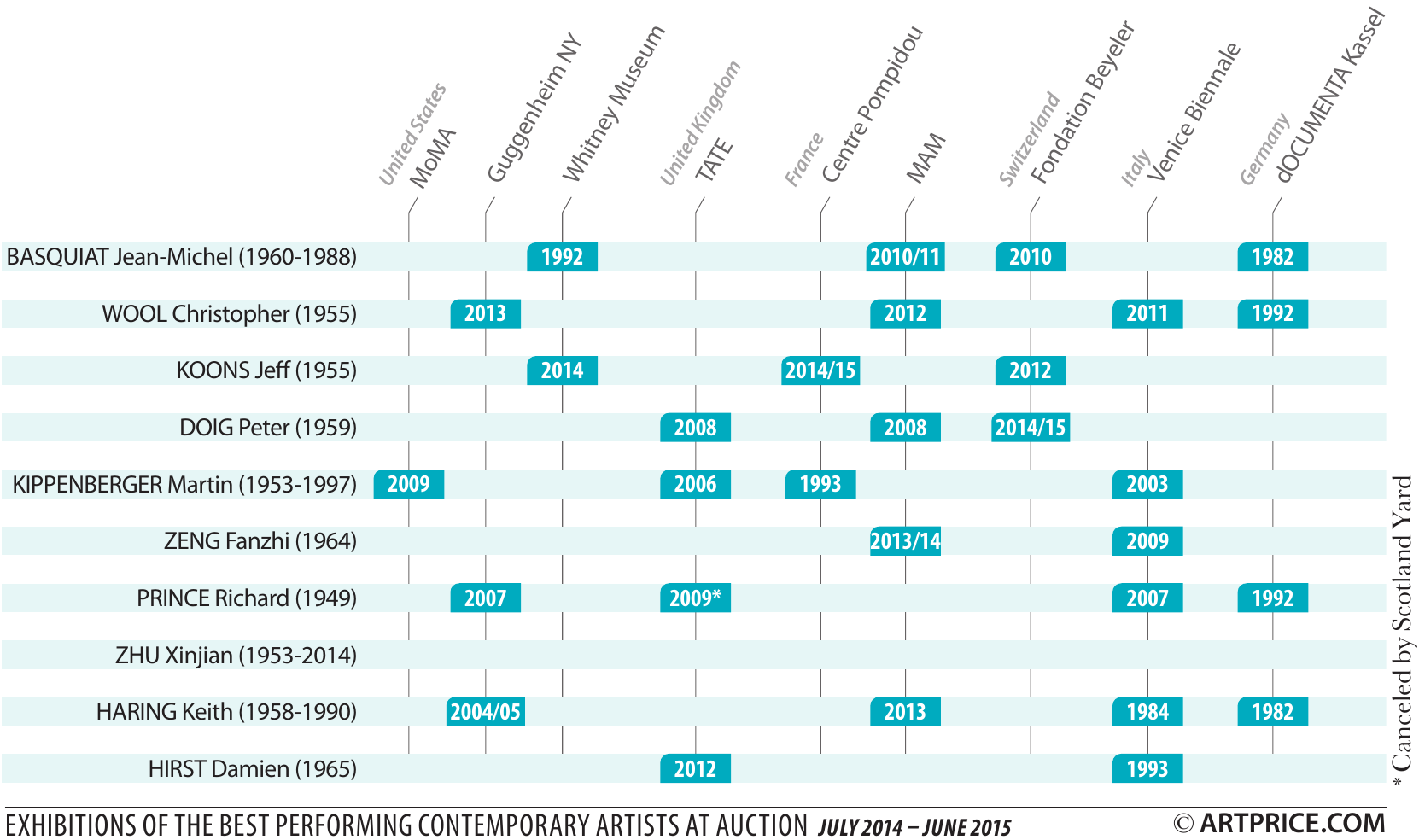Career Paths

The productivity and public perceptions of different artists are obviously determined by a wide variety of factors. An exhibition, a prize, or any other media exposure, can significantly modify the general reception of an artist’s work and of the artist himself. Do gallery and auction prices respond automatically to these events?
Vectors of official recognition, global artistic events act as genuine career catalysts. The more prestigious the event, the stronger the price stimulus seems to be. The simple fact of announcing a major retrospective has a positive impact on the artist’s prices months before the exhibition has opened. And yet the curatorial institutions are not always the discoverers of the market’s superstars; often they just confirm a popular enthusiasm that is already well established.
In France, the Centre Georges Pompidou (Musée National d’Art Moderne) has only exhibited the work of two of the world’s current top ten Contemporary artists by auction turnover, with Jeff Koons in 2015. The Koons retrospective supported an artist who already has a prominent public profile and who already enjoys intense market demand. On the other hand, Paris’s Musée d’Art Moderne has exhibited the work of half of today’s most in-demand artists.
In the United States, the prestigious MoMA only appears once in the CVs of the top ten (with a Martin Kippenberger retrospective), whereas the Guggenheim Museum – more attuned to market trends – appears in three of the current top ten artists’ CVs.
More or less in tune with market realities, these major cultural institutions represent signifi cant milestones for artists, although they are by no means the only infl uencers. In reality, an artist’s career is a succession of inextricably linked events. Hence, the signing of an artist with a prestigious gallery will inevitably boost his/her market prices, but those prices will depend on the artist’s previous circumstances and, going forward, they will have a signifi cant impact on his/her future success.
Nowadays, unlike the past, the market reach of an artist and his/her prices depends less on the role of art critics than on the support provided by prominent galleries and collectors reputed for their talent-spotting flair. At the heart of this sphere of influence, the major trend-setters, through the medium of powerful networks, have substantial control over the Contemporary art market. A gallery’s influence is reflected by its international success, its financial firepower and by the promotional dynamic that it generates. The major galleries present their artists to collectors and curators at the international art fairs, issue expensive publications and often support the prices of their artists at auctions. In these ways, they influence the volume of works by their artists available on the market, and ‘construct’ their market valuations.
In the Intermediary/Artist relationship, the prestige of the former fuels the success of the latter. A closer look at the career paths of the most sought-after artists allows a better understanding of their market values. From Damien Hirst, who constructed his prices by ‘playing’ with and finally saturating the market, to Ai Weiwei, fiercely independent and rare at auction, this chapter looks at the key steps in the careers of some of the market’s current superstars.




